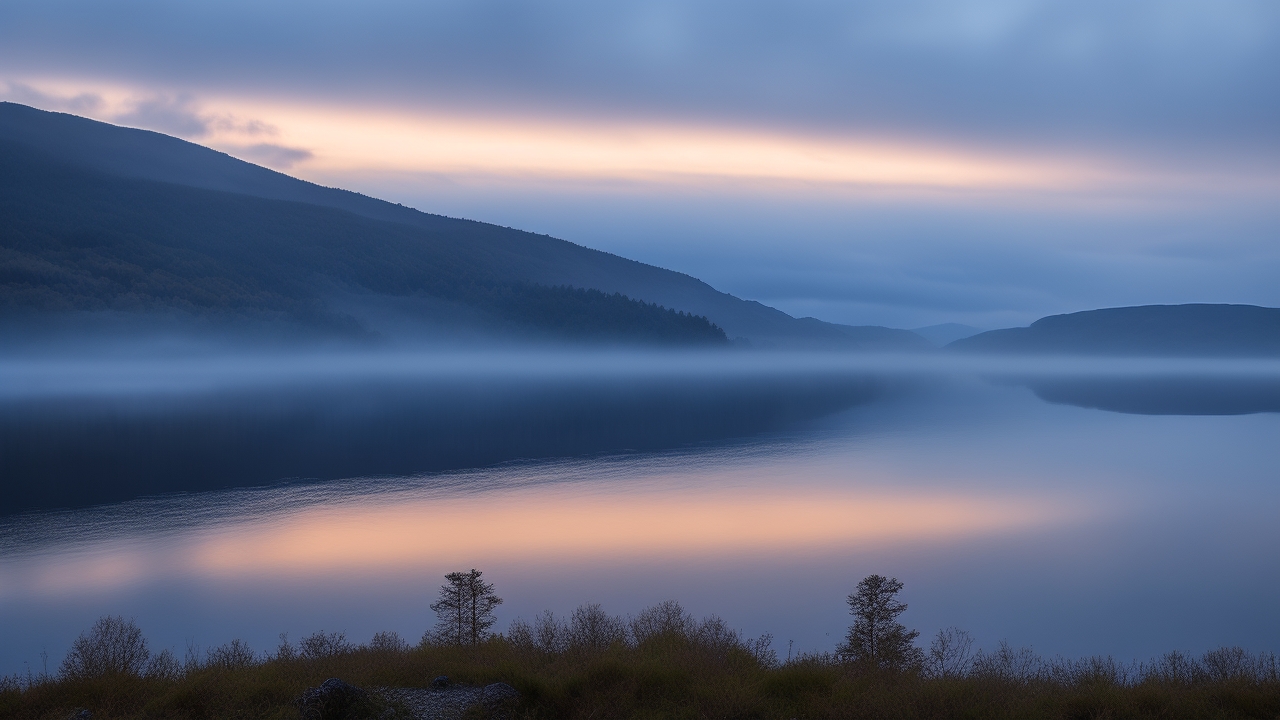The wind off Loch Ness was still as glass when the silhouette broke the surface — not a boat heading home, nor a stray log drifting in the tide, but something ambiguously alive, black and undulating, captured by a remote webcam and now buzzing through the veins of the world’s cryptid community. Scotland’s most elusive resident, the Loch Ness Monster, has returned to the front page, and with this new evidence, the line between folklore and fact blurs once again.
Latest Sightings
Early March 2025 marked what many are calling the first significant Loch Ness Monster sighting of the year. Eoin O’Faodhagain, a veteran Nessie investigator, spotted and recorded the event using a publicly available webcam from the Clansman Hotel — the footage shows a large, dark mass emerging and submerging four times in the same patch of open water, causing visible disturbances each time.
According to The Mirror and repeated in news outlets like BroBible, O’Faodhagain has ruled out known explanations. No logs or wildfowl behave this way, and the size, estimated at 15–20 feet, rules out seals or swimmers. ‘The only possibility is Nessie,’ he asserted, adding gravity to what could easily have been dismissed as mere waves. The Official Loch Ness Monster Sightings Register, which recorded only three in-person sightings and two webcam events last year, has already logged this as the premier sighting for 2025.
Another daylight sighting in the same week, noted by The Loch Ness Centre in Inverness, described ‘a large, dark mass’ partially surfacing at Dores Beach. Investigators at the Centre reviewed the video closely, describing ‘perfect’ conditions for cryptid research — calm, clear waters ideal for detecting anomalies. The event lasted several minutes and prompted renewed community interest locally and abroad.
National Geographic’s 2024 analysis noted that modern technology, like 24-hour live webcams and crowdsourced video, is leading to a measurable increase in cryptid incident reports — up 18% in documented monster sightings globally year over year. Curiously, a Pew Research Center survey in March 2025 found that 29% of Scots now believe there is ‘strong to moderate’ evidence supporting the Loch Ness Monster’s existence, a figure that’s on the rise from previous years.
Folklore and History
The mythos of Loch Ness stretches back through the centuries. According to VICE’s 2025 feature, the first stories of the Loch Ness Monster appear in ancient stone carvings by the Picts, depicting a mysterious aquatic creature with flippers and coils. Written records date to the 6th century, when Saint Columba is said to have banished a murderous water beast with a wave of his hand. Since then, the loch and its monster have become entwined in all forms of Scottish folklore.
The 20th century brought Nessie into the modern imagination, with waves of sightings, blurry black-and-white photographs, and feverish debates on cryptid news forums. Each generation adds to the legend: the mysterious 1934 ‘Surgeon’s Photo,’ the sonar scans of the 1970s, and today’s digital treasure trove of webcam feeds and citizen scientists. For locals, Nessie is both an icon and a guardian spirit; for scientists, a living example of how folklore evolves in tandem with technological advancement.
Why It Matters Today
What elevates these new sightings from idle curiosity to genuine mystery is their cultural and scientific resonance. Thousands of people visit the Scottish Highlands annually, not just to glimpse the monster but to immerse themselves in the landscape of legends. According to Visit Scotland, Loch Ness tourism generated an estimated $42 million for the regional economy in 2024, with cryptid-related travel making up nearly a quarter of that figure.
Researchers from the University of Aberdeen continue to probe the loch’s depths with DNA water sampling, sonar mapping, and bioacoustic monitors, searching for proof or, perhaps, new mysteries. The Loch Ness Centre’s general manager, Nagina Ishaq, told VICE this year, ‘Every observation adds to our understanding, whether it’s potential evidence of Nessie or new insights into the loch’s unique ecosystem.’ The blend of research and communal storytelling keeps the scientific debate alive — and the news cycle spinning.
Community Response and Practical Takeaways
This latest round of sightings has reignited the community, drawing together skeptical scientists, die-hard believers, and curious travelers alike. Forums are alive with debate, and amateur researchers share everything from home-brewed sonar scans to annotated webcam stills. The Loch Ness Monster mystery is not just a curiosity but a living dialogue about the boundaries of knowledge, the power of folklore, and humanity’s enduring fascination with the unknown.
- If you’re planning to search for cryptids: Use available public webcams — such as those managed by Visit Inverness Loch Ness — and consider visiting during calm weather for the clearest observations. Quiet mornings and evenings often yield the most activity reports.
- For those curious about the science: Watch for university-led research projects and published studies; community-submitted sightings are helping inform the next wave of cryptid research and environmental monitoring in the Scottish Highlands.
- Stay engaged with local businesses and guides: Many tours now combine on-the-water exploration with lessons in local folklore and ecological stewardship, deepening the experience while supporting the regional community.
One Monster, Many Meanings
The Loch Ness Monster is more than a shadow in the water. In 2025, Nessie embodies the intersection of folklore and science, of tradition and modern technology. The ongoing mystery feels as vibrant as ever, pulling together threads from centuries of rumor and decades of research. Whether the next splash on a webcam will solve the riddle or deepen it, the legend endures in our imaginations—and in the shared stories of those who keep watch over the loch’s fog-laced waters.
As Nessie resurfaces in the news, the question returns: What do you believe lurks beneath? Share your own stories, observations, or research with the community old and new. In the end, the magic is in the mystery — and it’s yours to join.
